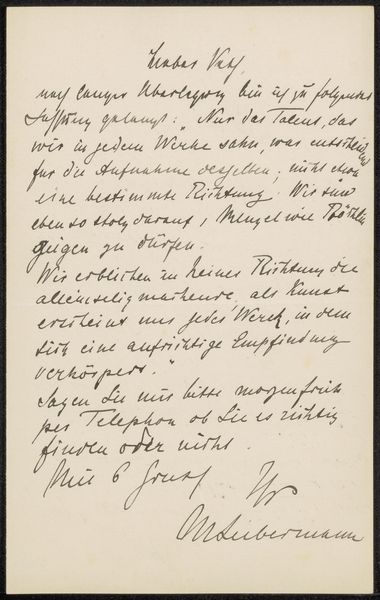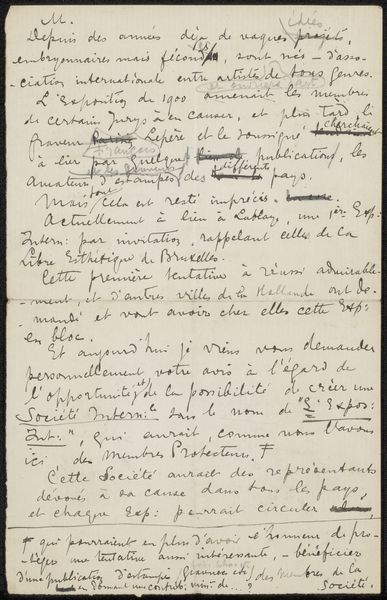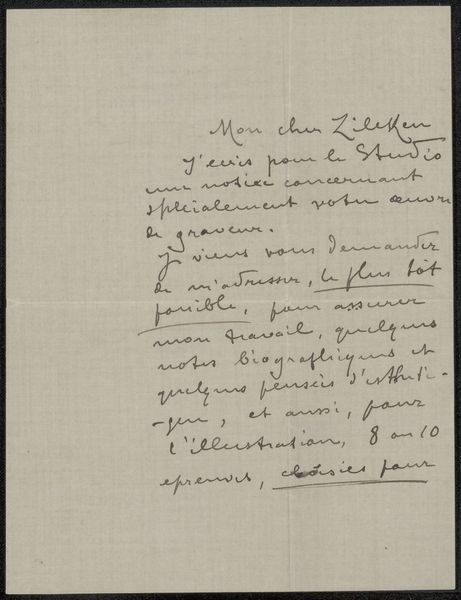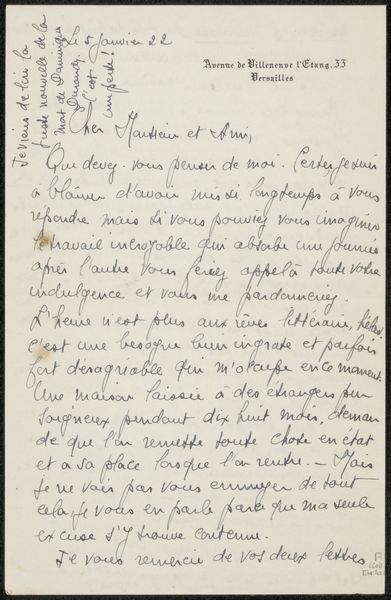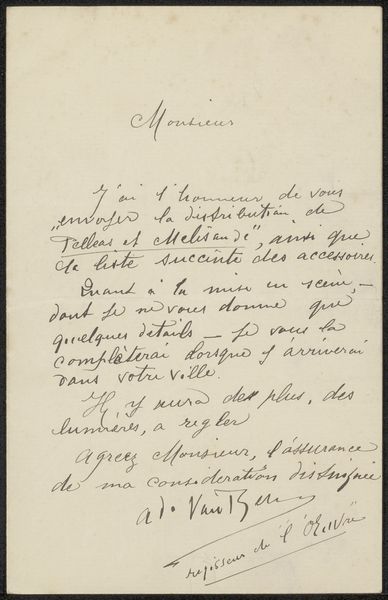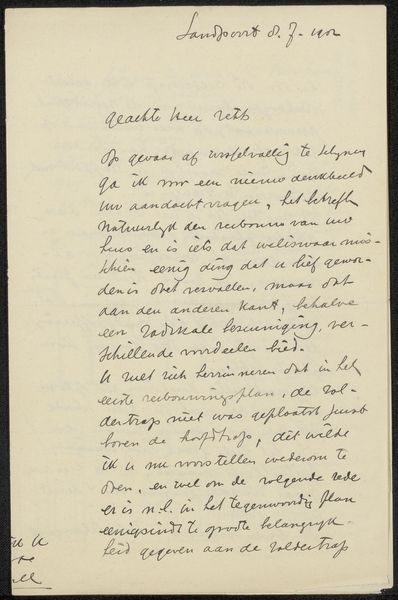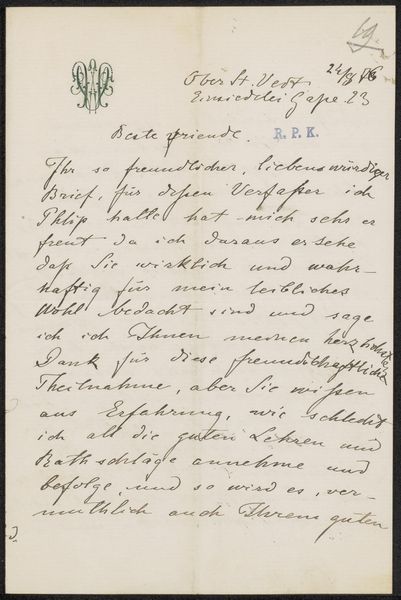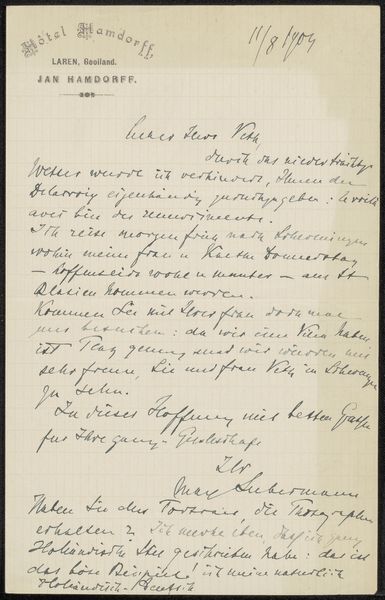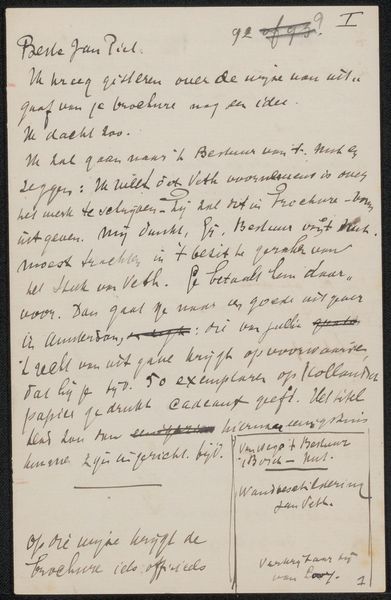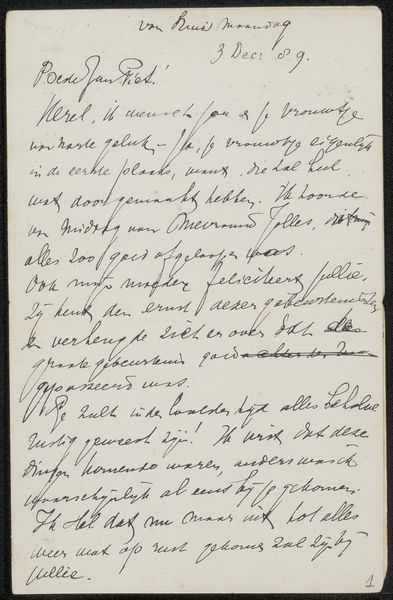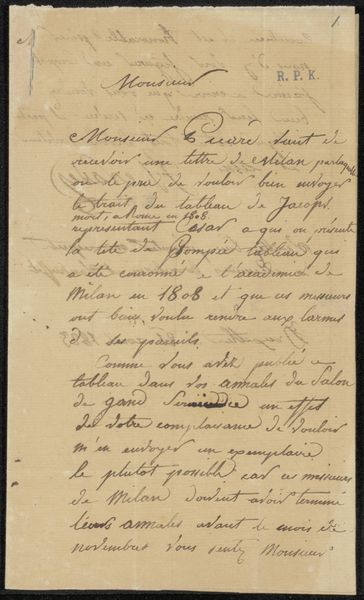
drawing, paper, ink, pen
#
drawing
#
script typography
#
hand-lettering
#
hand drawn type
#
hand lettering
#
paper
#
ink
#
pen-ink sketch
#
pen
#
calligraphy
Copyright: Rijks Museum: Open Domain
Curator: Here we have "Brief aan August Allebé," potentially created in 1911 by jonkheer Barthold Willem Floris van Riemsdijk. It’s ink on paper, currently residing in the Rijksmuseum. Editor: It gives me the sense of intimate correspondence—very personal, very immediate, and not at all conceived as "art" necessarily, wouldn't you say? It emphasizes labor of handwriting too, even with mistakes. Curator: Indeed, the script itself communicates a wealth of information. Consider the weight each stroke carries, reflecting the sender's education, social standing, even their emotional state. It's less about pure calligraphy and more about the psychology embedded within the hand-lettering, carrying meaning over time. Editor: I agree, it speaks of labor, a pre-industrial kind. Ink and pen, physical marks, evidence of production layered on paper. The contents of the message must also add weight as well, regarding art production itself and personal connections between the parties. It must provide a snapshot into the artistic social environment of the period, considering the artist questions about enrolling in Academie. Curator: It speaks to me about legacy, how reputations are formed, and the value we place on artistic training, doesn't it? The sender makes comments about Ingres to reinforce some meaning about drawing. One gets the feeling from the handwriting, too, of almost restless intellectual energy—someone constantly observing, connecting, and sharing their perceptions through this direct material trace of the inked word. Editor: And from the perspective of material culture, this is a valuable primary document showing both labor and methods of production of written communication and artistic practice, too, among early 20th-century Dutch artists. Thank you for calling my attention to the social forces present in the exchange, too. Curator: A fruitful examination, looking closely at this revealing correspondence, and to think of it still communicating all these meanings after so long!
Comments
No comments
Be the first to comment and join the conversation on the ultimate creative platform.
